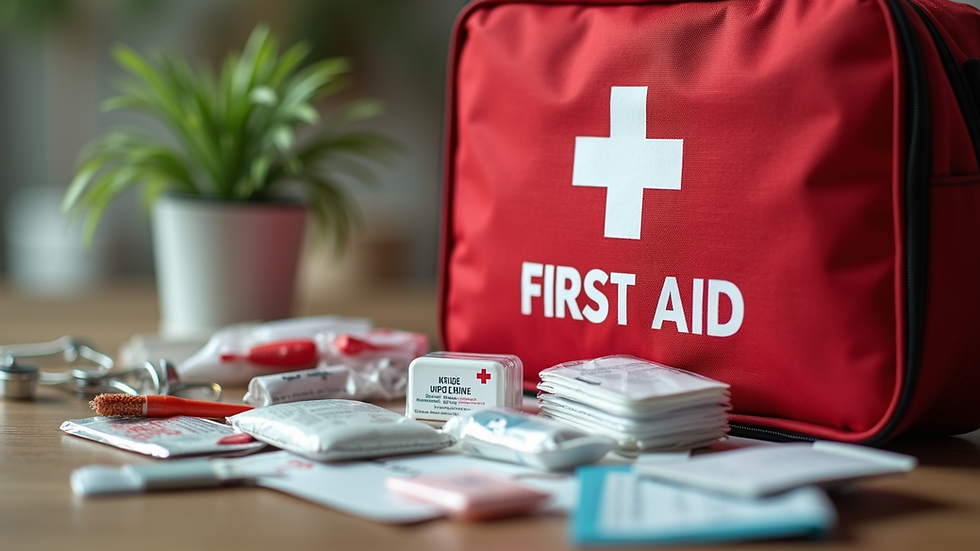Mastering Risk Assessment: Key Principles for Safety
- Aryeh Goldberg

- Nov 10
- 4 min read
Safety is a priority in every environment, whether at work, home, or in public spaces. Understanding how to identify and manage potential hazards is essential to prevent accidents and ensure well-being. This is where mastering the principles of risk evaluation becomes invaluable. By applying these principles, you can create safer environments and make informed decisions that protect people and property.

Understanding the Principles of Risk Evaluation
Risk evaluation is the process of determining the likelihood and impact of hazards in a given situation. It involves identifying potential dangers, assessing how severe their consequences could be, and deciding on the best ways to control or eliminate those risks. The principles of risk evaluation provide a structured approach to this process, helping to ensure that no critical factors are overlooked.
At its core, risk evaluation is about prioritising safety by understanding what could go wrong and how to prevent it. This involves:
Recognising hazards early
Estimating the probability of harm
Considering the severity of potential outcomes
Implementing control measures to reduce risk
Reviewing and updating assessments regularly
By following these steps, organisations and individuals can create safer environments and reduce the chance of accidents or injuries.
Why Principles of Risk Evaluation Matter
Applying the principles of risk evaluation is not just a regulatory requirement; it is a practical necessity. When done correctly, it helps to:
Prevent accidents and injuries by identifying hazards before they cause harm
Protect assets and resources by avoiding damage or loss
Improve decision-making by providing clear information about risks
Enhance compliance with health and safety laws and standards
Build a culture of safety where everyone is aware and proactive
For example, in a manufacturing plant, evaluating risks might reveal that certain machinery needs additional guards or that staff require extra training. In an office setting, it could highlight the need for better ergonomic furniture or clearer emergency exit routes.

What are the 5 Key Principles of a Risk Assessment?
To effectively manage safety, it is important to understand the five key principles that guide a thorough risk assessment:
Identify the hazards
Start by spotting anything that could potentially cause harm. This could be physical dangers like machinery, chemical substances, or even environmental factors such as slippery floors.
Decide who might be harmed and how
Consider all individuals who could be affected, including employees, visitors, contractors, or the public. Think about the ways they might be injured or impacted.
Evaluate the risks and decide on precautions
Assess how likely it is that harm will occur and how severe it could be. Then, determine what measures can be taken to reduce or eliminate these risks.
Record your findings and implement them
Document the hazards, risks, and control measures clearly. Make sure everyone involved understands and follows the safety procedures.
Review and update the assessment regularly
Risks can change over time due to new equipment, processes, or environmental factors. Regular reviews ensure that safety measures remain effective.
These principles form the foundation of a systematic approach to safety management. They help ensure that no step is missed and that risks are managed proactively.
Practical Tips for Effective Risk Evaluation
Implementing the principles of risk evaluation can seem daunting, but breaking it down into manageable steps makes it easier. Here are some practical tips to help you get started:
Engage with your team: Involve those who work in the environment daily. They often have valuable insights into potential hazards.
Use checklists and templates: These tools can guide you through the process and ensure consistency.
Prioritise risks: Focus on the most significant hazards first, especially those that could cause serious injury or damage.
Train regularly: Ensure everyone understands the importance of risk evaluation and knows how to contribute.
Keep records: Maintain clear documentation to track progress and demonstrate compliance.
For example, a warehouse manager might conduct weekly walk-throughs with staff to identify new hazards, update risk assessments, and reinforce safety protocols.
How to Integrate Risk Evaluation into Daily Operations
Safety should never be an afterthought. Integrating risk evaluation into daily routines helps maintain a safe environment continuously. Here’s how you can do it:
Make safety part of the culture: Encourage open communication about hazards and near misses.
Schedule regular inspections: Set fixed times for safety checks and risk reviews.
Use technology: Digital tools and apps can simplify data collection and reporting.
Assign responsibilities: Clearly define who is responsible for monitoring and managing risks.
Respond promptly: Act quickly to address any identified hazards or incidents.
By embedding these practices into everyday work, safety becomes a natural part of operations rather than a separate task.
Enhancing Safety Through Continuous Learning
Safety is an ongoing journey, not a one-time event. Continuous learning and improvement are key to mastering risk evaluation. Stay updated with the latest safety standards, attend training sessions, and learn from past incidents.
Encourage feedback and suggestions from everyone involved. Sometimes, the best ideas for improving safety come from those on the front lines.
For those interested in formal training, exploring courses on the principles of risk assessment can provide valuable knowledge and skills to enhance your safety practices.
Mastering the principles of risk evaluation empowers you to create safer environments and protect what matters most. By understanding hazards, assessing risks, and implementing effective controls, you can confidently manage safety challenges and foster a culture of care and responsibility.





Comments